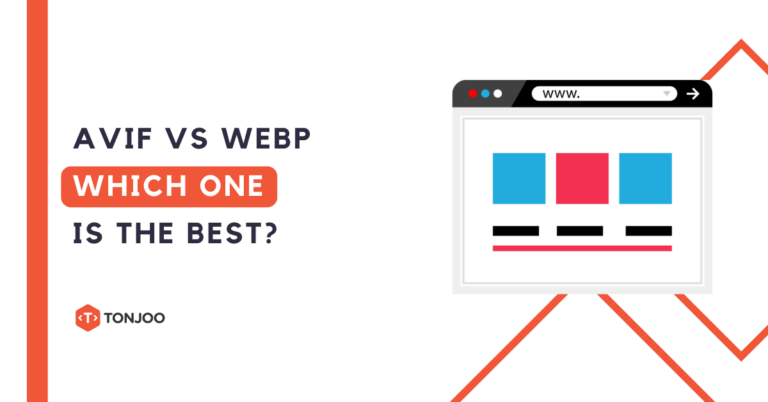
AVIF vs WebP? Both are modern image formats widely used on websites today to improve site performance.
Both formats offer up to 50% better compression while maintaining high visual quality.
Although you can hire professional website optimization services, using AVIF or WebP image formats is a simple step you can take to optimize your site on your own.
So, what is WebP? What is AVIF? What are the differences between these two image formats? And which one is better for your website?
Read the full explanation below to help you get the advantages of having a website.
Table of Contents
What Are WebP and AVIF?
As you may already know, many websites today use the WebP and AVIF image formats. Both formats offer advantages such as:
- Improving website performance
- Saving more bandwidth
- Maximizing SEO
- Better image quality
- Ability to display more images
Here’s a brief explanation of the WebP and AVIF image formats!
What is a WebP File?
What is WebP? WebP stands for Web Picture Format. It is an image format developed by Google that uses both lossy and lossless compression methods.
Lossy and lossless compression are two techniques to reduce file size. These methods also apply to other digital media files like video and audio, but here we focus on images.
- Lossy compression reduces file size by removing some data from the original file. This process is irreversible, meaning once compressed, the data cannot be restored.
- Lossless compression reduces file size without losing any original data. This method is reversible, so the file can be restored to its original format after compression.
WebP uses both methods to compress images, so compressed WebP images can be restored.
In contrast, JPG only uses lossy compression, meaning the image quality drops as file size decreases. Below is a comparison between original JPG and WebP images:

Comparison of image quality between original JPG and WebP using Squoosh
What is AVIF?
You may have come across AVIF files but not fully understood what they are. AVIF stands for AV1 Image File Format.
AVIF is an open-source image format released in February 2019 by the Alliance for Open Media. Like WebP, AVIF uses both lossy and lossless compression to create high-quality images.
AVIF supports both high dynamic range (HDR) and standard dynamic range (SDR) images. Like WebP, AVIF offers better or comparable image quality than JPEG with smaller file sizes.

Comparison of image quality between original JPG and AVIF using Squoosh
So, Which Should You Choose? AVIF or WebP?
AVIF vs WebP: Which One is Better?
Here is a comparison of AVIF vs WebP based on file size, image quality, compression, browser support, and SEO tool compatibility:

1. File Size
- WebP: Usually offers smaller file sizes than JPEG and PNG with similar image quality.
- AVIF: Provides even smaller file sizes than WebP at the same quality level.
File size matters because it affects website loading speed and bandwidth usage. Smaller files load faster, which benefits user experience and SEO.
2. Image Quality
- WebP: Delivers good image quality, often better than JPEG, especially at smaller file sizes.
- AVIF: Can show higher image quality than WebP, especially in fine details and color gradients.
High image quality is important for a clear visual experience, especially for images with text or subtle details.
3. Compression
- WebP: Supports both lossy and lossless compression.
- AVIF: Also supports both but is more efficient, particularly in lossy compression.
Compression affects how much file size is reduced and the resulting image quality.
4. Browser Support
- WebP: Supported by most modern browsers, including Chrome, Firefox, Edge, and Safari.
- AVIF: Support is growing but not yet as widespread. Chrome and Firefox support it, but Safari support is limited.
Browser support ensures images display correctly across devices and platforms. Broader support means fewer compatibility issues.
5. Transparency
- WebP: Supports transparency and animation, often used as a GIF alternative.
- AVIF: Supports transparency with better efficiency than WebP.
Transparency is useful for graphic design and web elements like logos or icons needing transparent backgrounds.
6. Animation
- WebP: Supports animation and is commonly used instead of GIFs.
- AVIF: Does not currently support animation.
Animation is important if you need animated images on your site.
7. Color and Depth
- WebP: Supports up to 24-bit color depth.
- AVIF: Supports higher color depth (up to 12-bit per channel) and a wider dynamic range (HDR).
Higher color depth and dynamic range provide richer, more realistic images.
8. Ease of Editing
- WebP: Relatively easy to edit with modern graphic software.
- AVIF: May not yet be fully supported by all editing software.
Consider editing ease when choosing a format for your design and production workflow.
9. SEO Tool Compatibility
- WebP: Well-known and optimized for SEO.
- AVIF: Still new and may need more time for full SEO tool integration.
SEO-optimized formats help improve search rankings through smaller file sizes without losing quality.
AVIF vs WebP: Which Image Format Is Best?
Both AVIF vs WebP have their strengths and weaknesses. To choose the right one, consider your specific needs.
Remember, optimizing website load speed doesn’t rely solely on image formats. Many factors affect performance. If you need help with website optimization, you can collaborate with the Tonjoo team.
Tonjoo is a software company and IT consultant with over 10 years of experience in web-based software development. You can view our portfolio to see our work. If you have more questions, feel free to contact Tonjoo.
Read similar articles by Moch. Nasikhun Amin on the Tonjoo blog about WordPress, WooCommerce, plugins, and other web development topics.



